7+ SAMPLE Territory Plan
-

Territory Plan Fact Sheet
download now -
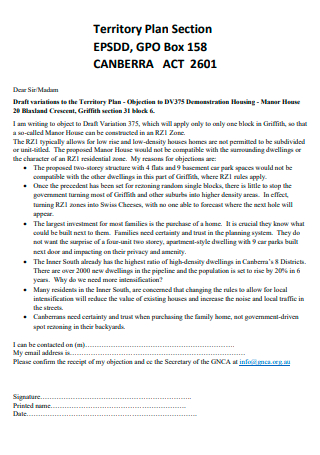
Territory Plan Section
download now -
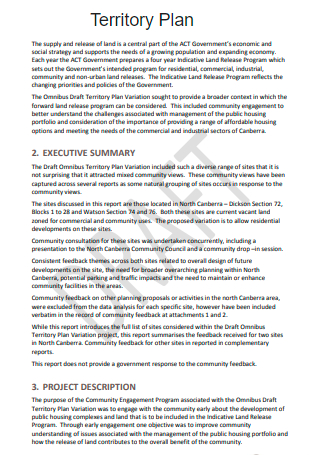
Draft Territory Plan
download now -
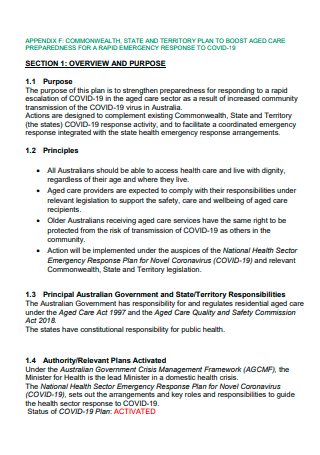
Territory Plan Example
download now -
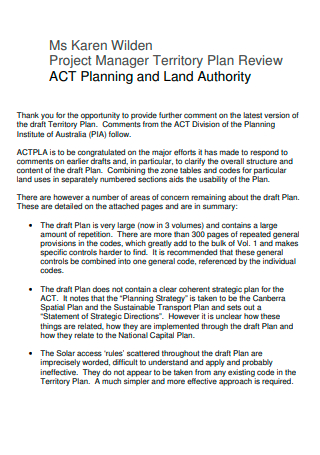
Project Manager Territory Plan Review
download now -
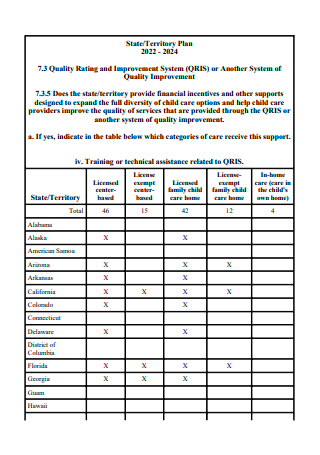
Basic Territory Plan
download now -
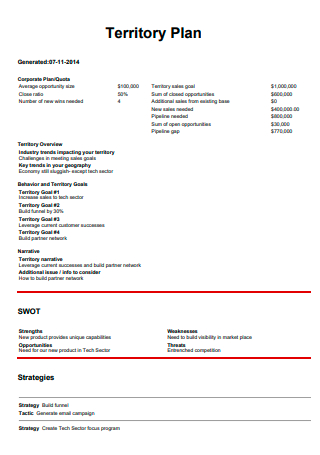
Printable Territory Plan
download now -
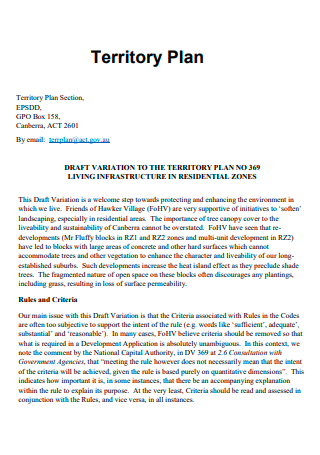
Territory Plan in PDF
download now
What Is a Territory Plan?
A territorial plan is a blueprint that shows how you will transform the region into a profitable business endeavor. Creating a detailed sales territory plan aids in the success of a corporation. It is usual for a sales manager to discover that their company’s sales regions are uneven. Statistics indicate that quality territorial design can enhance revenue by between 2 and 7 percent. Therefore, the area plan is an essential sales strategy foundation.
Benefits of Territory Plans
According to some experts, the key to sales success is a combination of competence, persistence, and an effective sales conversation starter. And indeed, they are all essential qualities for sales assistants. However, it ignores what is arguably the most crucial aspect of sales success, which occurs before a meeting is scheduled: your sales territory plan. Small business owners may ask about the necessity of a sales territory plan. After all, it appears to be a task for larger, more complex enterprises. You would never enter a sales meeting with a prospect without having prepared adequately. Creating a sales territory plan should follow the same procedure. This is why.
Tips in Building a Sales Territory Plan
A successful sales territory plan comprises a strategic sales territory design, excellent territory management, and sales territory alignment. Here is a perspective on how to execute them properly. If you opt to create your sales territory without a plan, you will quickly discover that your budget and resources are depleting quicker than your return on investment can keep up. Does this sound familiar? If you’re using borrowed time and money every quarter to prospect and close new business, familiarize yourself with the following sales territory rules of engagement.
1. Define your market.
To effectively establish territories, sales leaders must first comprehend the business environment. A corporation can define its market in different ways. Geography, size, consumer demographics, competitiveness, and other variables may be considered. But it is essential to begin with internal company factors. Consider your company’s primary principles, objectives, and revenue. Which part of your customer base generates the most significant money and is most matched with these characteristics? Once you have identified this group, search for similar niche markets that your sales staff may be able to penetrate. For instance, if your most profitable customers are in the consumer packaged goods industry, consider targeting niche markets within this sector, such as food & beverage or health & beauty. These could become new markets for your company. Recognize what is unique to your firm and establish priorities based on the climate’s needs. Targeting a profitable market area as its own sales territory will result in decreased overhead expenses, more sales, and reduced customer attrition.
2. Assess account quality.
After identifying the ideal market for your sales area, you must determine the worth of each account within that market. The measurement could be quantitative or qualitative, depending on your firm’s product or service. For instance, a beverage firm may evaluate the value of its accounts according to its net profitability. In contrast, a company that significantly relies on customer referrals could prioritize customers more likely to provide a referral. By assessing the worth of each account, sales territory planning priorities may be established. Thus, your sales team will be aware of which customers are represented in their quota metrics and will be able to offer these clients the attention they warrant.
3. Determine the quality of the land.
After evaluating the quality of each account, it is time to analyze the overall viability of the territory. This procedure is based on personal business requirements and priorities as with account values. Continuing with the example of consumer packaged products, if you have a food & beverage territory and a health & beauty territory, you may discover that each has unique sales cycles, churn rates, and even repeat purchases. These are a few examples of things that may influence the quality of a sales territory. Internally, you may determine that the sales cycle is essential in assessing a region’s quality and use this criterion to rank each one from best to worst. A shorter sales cycle in the health & beauty territory could result in a quicker return on investment for your team. Therefore, you could rank the health & beauty territory higher than the food & beverage zone. Include your sales staff in these meetings to obtain a clearer view of territorial value. Ultimately, nobody knows the territories better than the sales representatives who work within them daily. Thus, you can allocate the proper representatives to each part to maximize its potential.
4. Understand the strengths of your sales reps.
The subsequent phase of successful territory management could be the most crucial. After establishing the quality of each sales region, you must appoint sales representatives with the necessary skills to develop and optimize each territory. Assigning a territory defined by large enterprise deals to a salesperson who has experience closing large deals is an example of an outstanding sales territory assignment. However, this is not to argue that as a sales leader, you should hand-select specific representatives in a particular territory. This action represents the inverse. Instead of assigning representatives to highly specialized tasks that create silos, you can foster a culture of continual learning. Utilize the knowledge of each sales representative to introduce best practices for each region that can be shared with the team. By strategically allocating experienced representatives to accounts, you will empower your team to provide consumers with an exceptional purchasing experience.
5. Review your sales territory plan.
The four processes discussed above will prepare your organization to implement a sales territory plan, but you must conduct a final cost analysis for each region. As a sales leader, analyzing cost metrics will enable you to pinpoint and address specific system inefficiencies. There are numerous methods for identifying these industries. Still, I suggest beginning with customer acquisition cost CAC. Using this indicator, you can immediately determine the expenses of prospecting and closing each business. You can also analyze CAC over time, against competitors, and against industry norms to choose a healthy CAC for the area.
How To Create an Ideal Territory Plan
The cliché “failure to plan is planning to fail” is just as applicable to sales management as it is to any other business area. While sales managers typically have great expertise in creating sales territory strategies, the stakes have never been higher. There is a significant premium on having an accurate sales territory plan, just as there is on having a precise quota plan and a thoroughly trained sales crew. There is no silver bullet for effective sales management, but effective sales territory planning can lead you a long way on the right path. Consequently, a systematic approach to sales territory management contributes significantly to the maximization of sales productivity. What is the optimal method for implementing this model?
1. Define Your Business Objectives and Goals
The key to a successful sales year is having a thorough understanding of your goals and business objectives. Standard metrics include revenue, market share, product or service-specific revenue metrics, and maybe customer signup or renewal analytics. Not usually, but ideally, these indicators will focus on growth. To protect their financial position, businesses in mature markets will want to retain their current consumer base. It is not uncommon for a company’s portfolio of offerings to have a mix of positive growth, neutral growth, and negative growth models. Other dynamics may include the development of clients in a particular industry or creating new transaction models, such as subscription pricing, that guide the company toward future unique and distinct customer connections. Similarly, the plan may include the migration of clients from existing products to new products. Targeting your competitors’ customers to get them to switch to your product is another viable strategy. Before constructing your regions, it makes sense to determine your objectives, regardless of your chosen method. Before continuing any further, it is also beneficial to get these early ideas approved by the other corporate stakeholders to ensure everyone is constantly on the same page.
2. Know the Needs, Issues, and Drivers of Your Customers
When you know what you wish to achieve commercially, the next step is carefully considering the other half of the business equation: your clients and prospects. From a sales and marketing standpoint, knowing too much about a consumer is nearly impossible. In addition to establishing a professional relationship and rapport with a prospect, it is crucial to have a thorough awareness of their industry difficulties and their commercial impact. Suppose a sales representative understands how industry dynamics impact their prospect’s capacity to reduce costs or boost revenues. In that case, they will be well on their way to resolving their customers’ challenges, particularly if they can demonstrate a deeper understanding of the issues than their competitors. The magnitude, breadth, and complexity of a prospect’s issues will significantly impact the measurement of the sales cycle and the buying process. In short, the lengthier the sales cycle and the greater the number of persons participating in the purchase decision, the more complex and costly the proposal. In all likelihood, as a result, the sales territory will become smaller. Similarly, products and services that address fewer complicated issues usually have shorter sales cycles and the more significant part. Understanding this dynamic and how it may evolve will allow you to develop and manage your company’s most effective sales territory plan.
3. Do a SWOT Analysis
The corporate environment is changing, presenting potential risks to exploit and defend against. The SWOT analysis is the industry standard for comprehending these dynamics. Even though it is utilized less frequently in territorial planning, it provides a vital viewpoint on the dynamics at play. It, therefore, indicates how a company’s time, budget, and resources should be deployed for optimal effect. Determining and comprehending the possibilities and risks to which a product, service, or business is exposed, and their interrelationships can aid in defining the optimal sales strategy and, consequently, the optimal design of sales territory. It can also be a foundation for the marketing function to design extra promotional campaigns for specific sectors to solve particular sales and marketing difficulties.
4. Construct Your Strategy
With a firm grasp of your objectives and the market dynamics you’re attempting to penetrate, you’re in an excellent position to formulate a sales strategy. Your sales territory strategy will be a crucial component. Your sales strategy will change depending on whether you are engaged in account management or new business growth. It will also vary based on the intricacy of the product or service and the sales cycle involved. It may also differ in how transactions are finalized, whether face-to-face or through e-commerce platforms. It must be defined, documented, and presented so that “all compasses point north” in the business for everyone’s benefit.
5. The Sales Territory Action Plan Is Everything
After establishing your objectives and plan, your next priority should be executed. Each sales region, which has been meticulously constructed utilizing various internal and external data, will have an activity generated and owned by the sales representative responsible for that territory. The action strategy will differ amongst domains. Some will increase revenue by providing new products and services to current contacts. Others will push higher and further inside the organization to expand upon the basic foundation. Some strategies may involve targeting businesses for the first time and identifying the most qualified individuals to engage with the challenges you can solve. It would be prudent to engage with the marketing function to identify the individuals who should be targeted and to assist in developing proposals based on the challenges these prospective customers are likely to experience.
6. Review and Evaluate Your Plan Routinely
With sales territories established and supporting plans in place, you are in a position to conduct regular progress reviews. The detailed insights should ensure you connect with the appropriate sectors, segments, and personalities. You may measure both the inputs – sales calls, meetings, and marketing activities – and the outcomes – leads, opportunities, and income – to determine whether you are ahead or behind the competition. Review your plans and modify them as necessary to achieve your other goals.
FAQs
What is a territory goal?
The objective of a sales territory is to target a particular market utilizing a simplified sales strategy that efficiently provides resources to sales teams to close agreements in that area.
How is a sales territory designed?
The sales manager assigns territory to the salespeople based on their sales performance. The geographical regions with solid sales are given to the most experienced salesperson capable of handling the volume. The locations with the lowest sales potential are given to less professional or less competent salespeople.
Why is territory management important?
Territory management may assist your sales staff in distributing their workload, allowing them to perform tasks more efficiently, create stronger customer relationships, and generate more high-quality leads.
There are only about 200 selling days a year for sales teams, so they have to make the most of each one. This means that your salespeople should spend their time with prospects who are most likely to buy from your business. When you automate your planning and management of territories, you don’t have to spend time digging through spreadsheets and flip charts to get the best results for you and your business. Use your business and market data to ensure that your salespeople are talking to the right people about the correct product at the right time.
